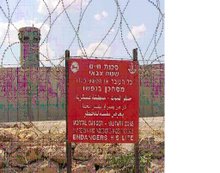
The following piece includes the design and assessment of the logic model pertaining to the US Foreign Policy on Israel and Palestine. The model has been designed by me based upon my review of media articles, television journals and my experience as a volunteer this summer with a group of Palestinian activists. Israel and Palestine have been engaged in a bitter conflict from the time Israel was created in 1948. The conflict is over the right of existence to a land which both Arabs and Jews claim as their own. The region has been witness to violence in the form of wars and terrorism as well as dispossession and displacement of the Arabs due to Israeli settlements. The current Obama administration hopes to start another round of negotiations using these settlements as an entry point to gain favor with Palestine and other countries in the Middle East who largely view the US government role to be historically biased towards Israel. Settlements are a key issue in Israeli-Palestinian negotiations because they result in the Gaza and West Bank being disintegrated into several discontinuous “districts” and being gradually taken over by Israel. The negotiations have also been perceived to follow the Middle East Roadmap to Peace that was developed in 2003.
Review of the Logic Model
Upon assessing the logic model, it was found that most of the relationships in the model were logical. This was evaluated by using the if/then statement to analyze the relationship. A typical analysis would be,” if condition 1 exists, does it then lead to condition 2.”? Note that here conditions refer to either “inputs”, “activities”, “outputs” or “outcomes”. At the same time it was found that there were a few inherent assumptions in the model. It was assumed that the respective Prime Ministers of Israel and Palestine, key inputs for the activity of political dialogue, were ready to talk to each other at the time the US President was pressuring their governments. This is a key assumption because the government of Israel was newly elected in 2009 and it was a largely a coalition of right-wing parties who were against Israel making any concessions of the sort that the US government were asking them of them. In my opinion this critical “environmental factor” was missing. Had it been kept in mind the US government would have been aware that it would be political unstable for the newly elected Prime Minister of Israel to start a process opposed by his government and against the current public sentiment given the fact that it voted in the right-wing government.
The relationships in the model are largely causal. This was assessed by analyzing the direction of the arrows between two stages in the model. If it seemed that condition 1 can “create” condition 2 then the relationship is deemed causal. Yet at one stage of the logic model it is assumed that the condition “halting of settlements” would cause the “Arabs nations to normalize ties with Israel”. I say that it is an assumption because neither the Palestinian government nor the other Middle Eastern countries in the Middle East have made any such declarations in the media reports related to the current efforts to the start the negotiations. Within the logic model there are also certain activities that require critical inputs that are missing in the model. These are mainly the sanctions on Iran by the US government in order to placate the fears of Israel. This activity would also require the support of the other countries in the Middle East as well as international support. While media reports seem to indicate that international support is available, the Middle Eastern countries have yet to offer their support which is crucial if the US government does not want to further alienate that community of nations. In my opinion it seems that that the US government wants to focus on achieving peace between Israel and Palestine to receive the support of the Middle Eastern countries in limiting Iran’s growing power.
Another key element that is missing is the engagement of Hamas, the leading political party in Gaza. The outcome related to the “implementation of the plan” would not be possible without the support of the Hamas which is still seen as a legitimate representation of the Palestinian struggle by many Palestinian people. Therefore the logic model should have a set of activities relating to encouraging the mutual engagement between Fatah and Hamas. It is also evident that the long term outcomes in this model are related to the activities of termination of settlement construction and negotiations between Israel and Palestine. Yet the negotiations itself is a very complicated stage and would need to resolve burning issues like the “right of Israel to a Jewish state”, “the right of return for Palestinian refugees”, and “division of Jerusalem as the political capitals of Israel and Palestine”. The outcomes of these negotiations would require a different set of inputs, activities and outputs. In terms of the initial outcomes there is clearly an immediate impact on the people of Israel and Palestine. The one million Israeli people who are currently residing at the 300-400 settlements in the West Bank would have to immediately relocate. The Palestinian villages would be free to access their agricultural land for their livelihood without fear of retribution from the Israeli military or the people living in the settlement.
In the logic model of the US Foreign Policy on Israel and Palestine, the outcome related to the implementation of the Roadmap to Peace is measureable. This is so because the roadmap is explicit in its initial goals that are related to withdrawal of settlements and end to terrorist incidents. Both these objectives are quantifiable and therefore measurable. Amongst the burning issues, the issue of “right to return for Palestinian refugees” and “division of Jerusalem into the political capitals of Israel and Palestine” are both issues that can be evaluated.



No comments:
Post a Comment